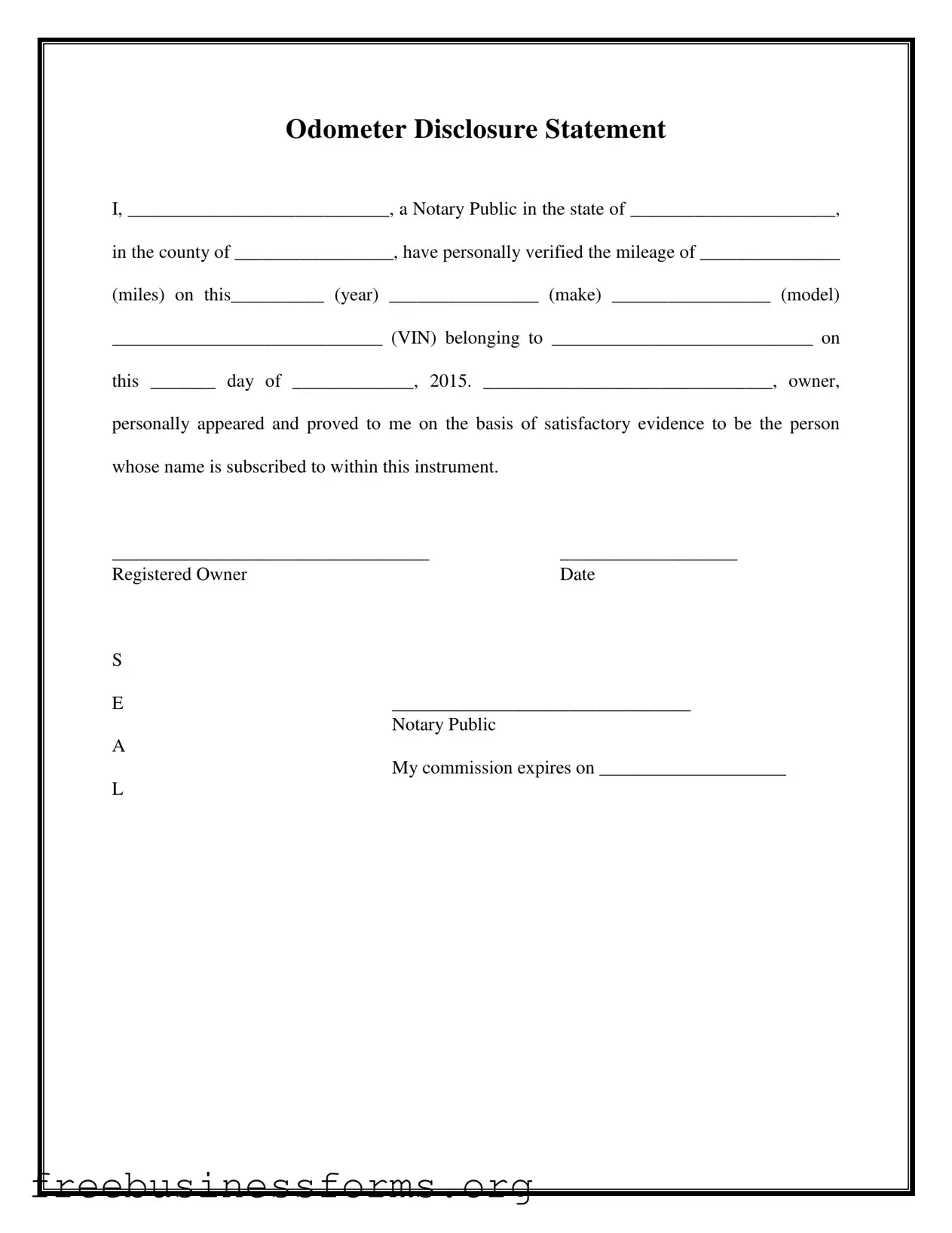Official Notarized Odometer Statement Form in PDF
The Notarized Odometer Statement is a legal document used to verify the mileage of a vehicle during a sale or transfer. This form is completed by a Notary Public, who confirms the accuracy of the odometer reading and the identity of the vehicle's owner. Proper completion of this statement helps protect both buyers and sellers from potential fraud related to vehicle mileage.
Open Form Here

